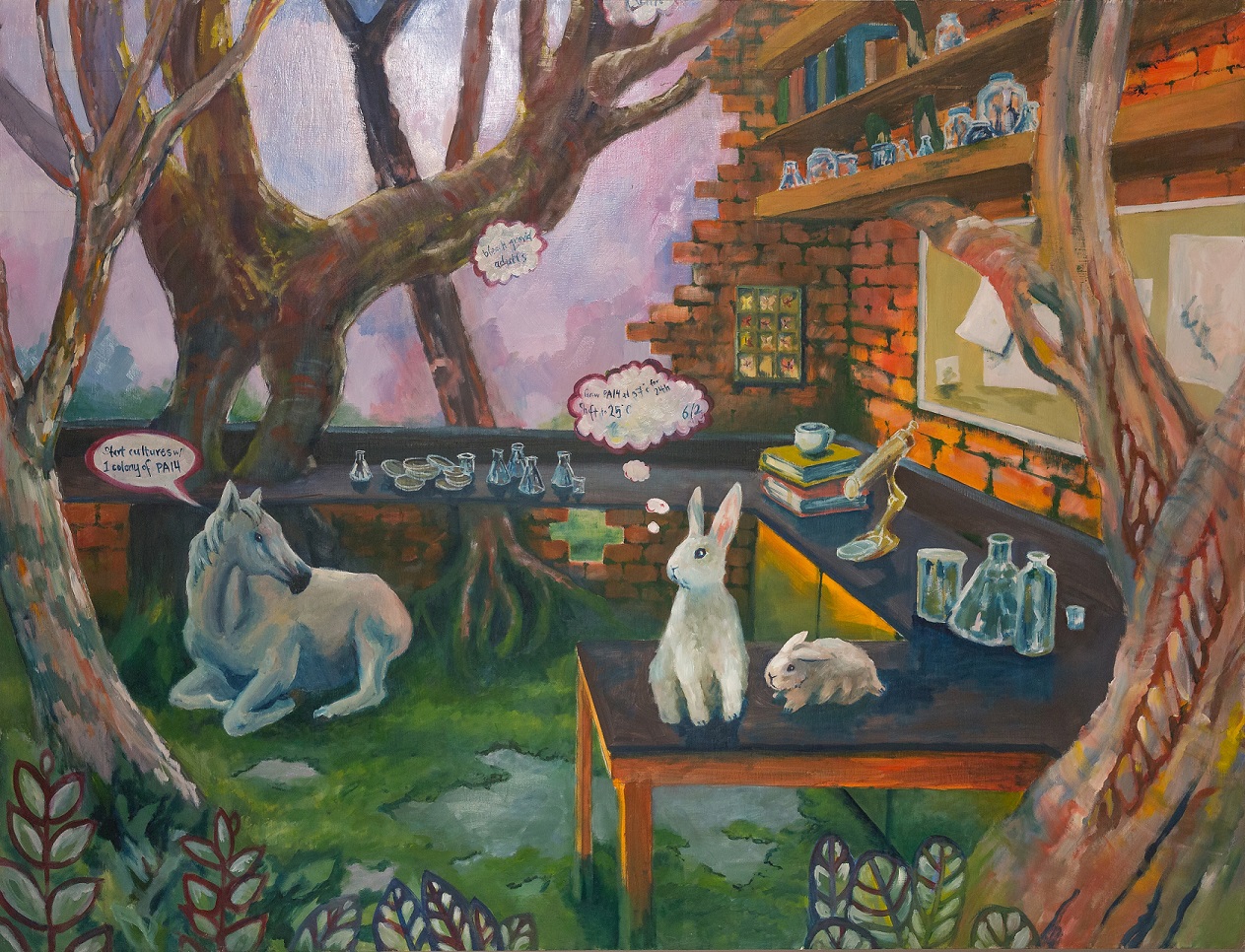2022 Honorable Mention – Zoe Yeoh

McCreary 208
Oil Painting
The scientific concept I was inspired by was hypothesis-driven research. McCreary 208 references a physical laboratory space: my undergraduate lab at Gettysburg College, PA. Here, I learned the importance of testing hypotheses and careful record-keeping and observation of the results. In addition, what was most intriguing to me was that obtaining unexpected results could dramatically subvert expectations but lead to exciting discoveries. When I visualized this piece, I wanted to evoke the same subversion of expectations that manifested with hypothesis-driven research by reimagining my sterile laboratory as a space reclaimed by nature.
The scientific concept I was inspired by was hypothesis-driven research. McCreary 208 references a physical laboratory space: my undergraduate lab at Gettysburg College, PA where I studied the innate immune response in C. elegans, a model organism. Here, I learned the importance of testing hypotheses and careful record-keeping and observation of the results. In addition, what was most intriguing to me was that obtaining unexpected results could dramatically subvert expectations but lead to exciting discoveries. When I visualized this piece, I wanted to evoke the same subversion of expectations that manifested with hypothesis-driven research by reimagining my sterile laboratory as a space reclaimed by nature. I felt like this concept could best be visualized by painting a scene in the theme of Surrealism, which is characterized by dream-like and symbolic visuals.
The brick walls that surrounded me while I did my research are literally deconstructed in this painting, revealing open air and sunlight (the lab was windowless). Both lab equipment and natural objects are present, while a horse and two rabbits replace any human life that might have occupied the space. Even in this reimagined piece, there seems to be something of an experiment in progress. Scattered lab equipment and snippets of written protocols, perhaps excerpts from a lab notebook, drift through the piece in thought and speech bubbles. PA14, referenced twice in these texts, is a virulent strain of Pseudomonas aeruginosa, an opportunistic pathogen that colonize immunocompromised patients in hospitals. These bacteria form green biofilms and cultures, a concept additionally referenced in the organic green “carpet” which covers the floor of the lab. In my research, I used PA14 to test C. elegan’s innate immune response by measuring their survival upon exposure to the pathogen. However, living organisms can seemingly co-exist in space covered by this green carpet, posing the question of what is harmless or hurtful – and which organisms in this painting have those properties.
In keeping with Surrealism, I attempted to represent certain ideas with symbols. Two white rabbits, animals that are used in research, are present in the lab space. Further, the two rabbits represent a parent and a child, signifying the mentor-mentee relationship in labs that can make or break a young scientist’s future.
In total, this piece plays with contrasts – nature and science, researcher and subject, invader and invaded. These contradictions parallel the unexpected, but sometimes delightful and ground-breaking, results that scientific research promises.
